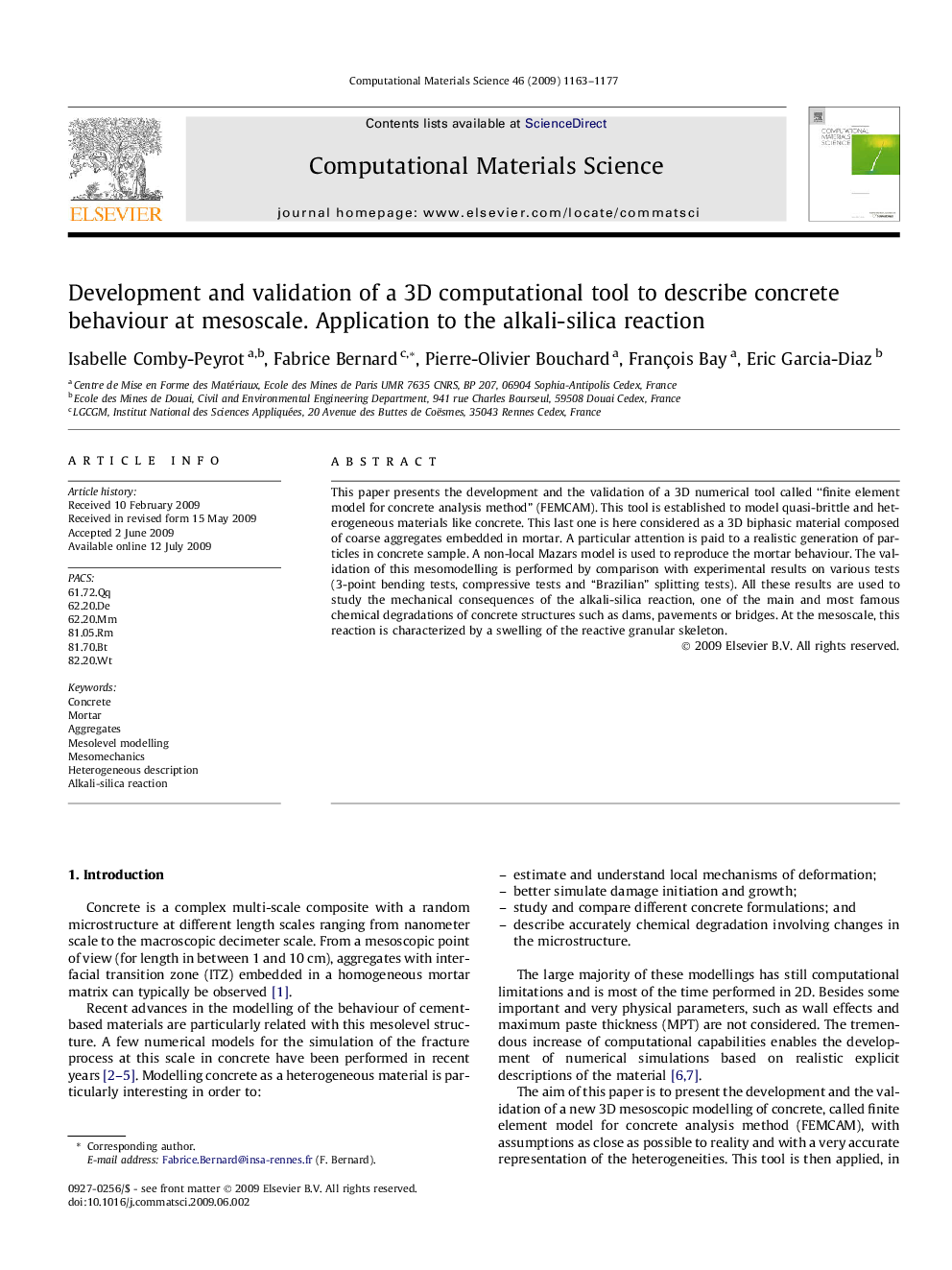| Article ID | Journal | Published Year | Pages | File Type |
|---|---|---|---|---|
| 1563168 | Computational Materials Science | 2009 | 15 Pages |
Abstract
This paper presents the development and the validation of a 3D numerical tool called “finite element model for concrete analysis method” (FEMCAM). This tool is established to model quasi-brittle and heterogeneous materials like concrete. This last one is here considered as a 3D biphasic material composed of coarse aggregates embedded in mortar. A particular attention is paid to a realistic generation of particles in concrete sample. A non-local Mazars model is used to reproduce the mortar behaviour. The validation of this mesomodelling is performed by comparison with experimental results on various tests (3-point bending tests, compressive tests and “Brazilian” splitting tests). All these results are used to study the mechanical consequences of the alkali-silica reaction, one of the main and most famous chemical degradations of concrete structures such as dams, pavements or bridges. At the mesoscale, this reaction is characterized by a swelling of the reactive granular skeleton.
Keywords
Related Topics
Physical Sciences and Engineering
Engineering
Computational Mechanics
Authors
Isabelle Comby-Peyrot, Fabrice Bernard, Pierre-Olivier Bouchard, François Bay, Eric Garcia-Diaz,
